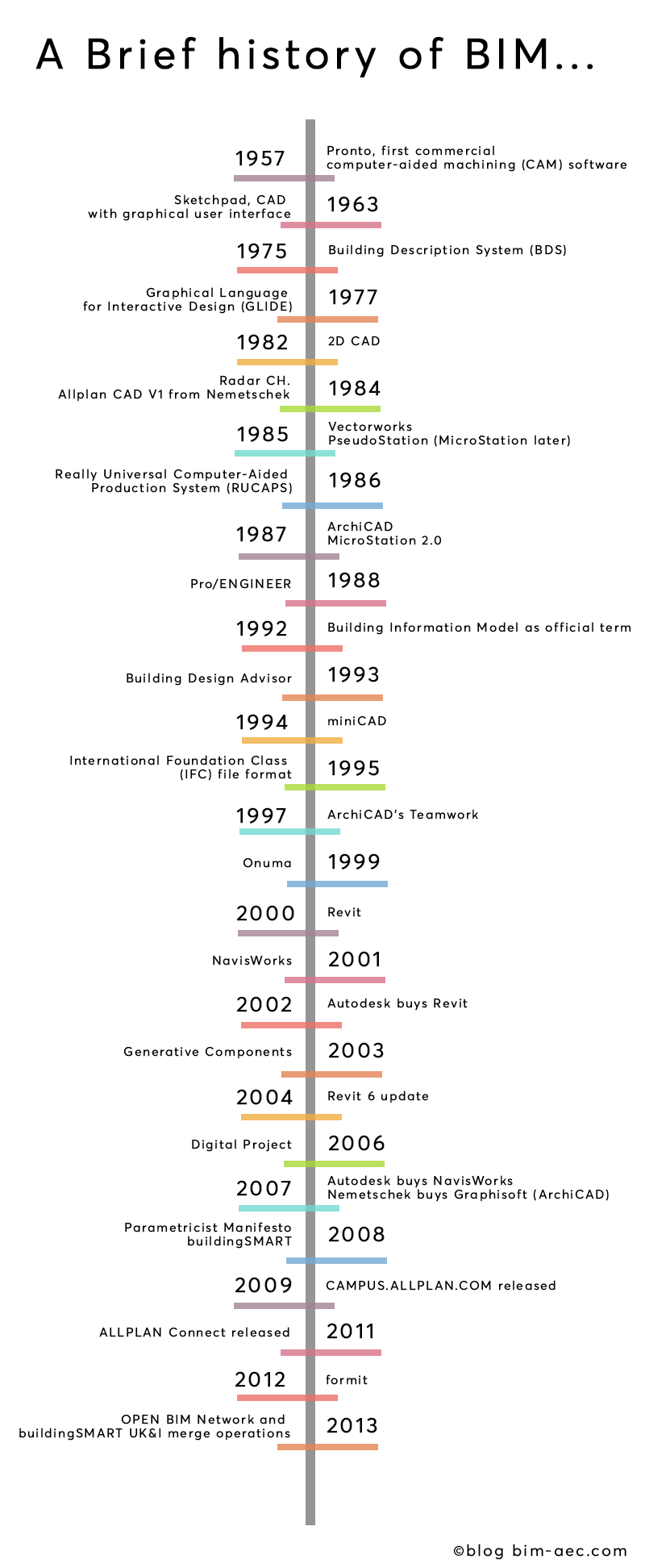As a concept, the foundation of BIM was first documented in the paper Augmenting Human Intellect (1962) written by Douglas C. Englebart. Englebart suggests object based design, parametric manipulation and a relational database could come together to realise a vision where …
“the architect next begins to enter a series of specifications and data. When he has finished, the revised scene appears on screen. A structure is taking shape. He examines it, adjusts it… These lists grow into an evermore-detailed, interlinked structure, which represents the maturing thought behind the actual design.”
However the term Building Information Model was first coined a 1992 paper by G.A. van Nederveen and F. P. Tolman. Both terms Building Information Model and Building Information Modeling (including the acronym “BIM”) had not been popularly used.
In 2002, Autodesk released a white paper entitled “Building Information Modeling”. Jerry Laiserin helped popularize and standardize the term as a common name for the digital representation of the building process.
Graphisoft was using a different terminology, so called, “Virtual Building”.
Bentley Systems was calling it: “Integrated Project Models”,
Autodesk and Vectorworks was using the the name from the white paper: “Building Information Modeling”.
One of the main ideas behiend the concept is to facilitate exchange and interoperability of information in digital format.
According to Laiserin and others, the first implementation of BIM was under the Virtual Building concept by Graphisoft’s ArchiCAD, in its debut in 1987.
